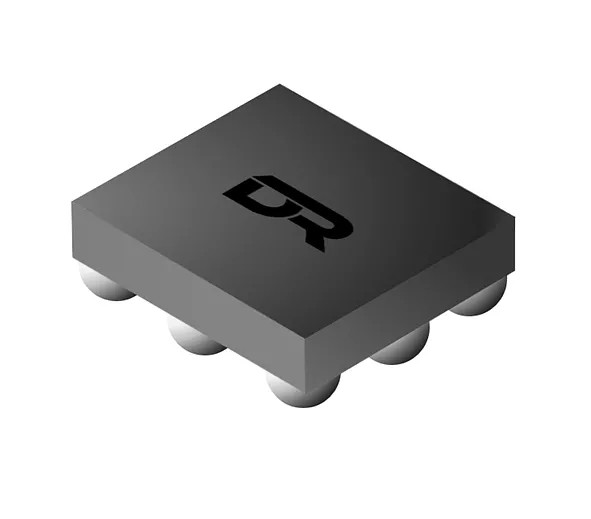Overvoltage Protection IC (Protection IC)
USB TYPE-C® PROTECTION IC
Due to the compact size of USB Type-C® connector which spacing between pins are extremely close, any sliding or dislocation in contact point or moisture to connector, or cables and equipment with poor design would cause short circuit in Vbus to CC or SBU pin, in which a damage to CC or SBU would occur when Vbus voltage exceeds 5V. Therefore, CC and SBU pins require the maximal VBUS 24V voltage tolerance under USB PD specifications to avoid damages resulting from short circuit.
For a holistic overvoltage protection plan, in addition to OverVoltage Protection (OVP), whether there is Energy Clamping protection mechanism to correspond to ringing resulting from Cable and RLC from system board, instantaneous voltage reaching 40V, or lapse longer than ESD in the OVP switch duration shall be considered. Within the switch duration, the single-chip plan featuring OVP, Energy Clamping and ESD is your best choice!
DR1618
6-Channel ESD and 4-Channel VBUS Overvoltage Short-Circuit Protection
DR1620
CC Pin ESD and VBUS Overvoltage Short-Circuit Protection
DR1618
USB Type-C® Port Protection Chip
6-Channel ESD and 4-Channel VBUS Overvoltage Short-Circuit Protection


Product Description
DR1618 does not affect normal use of products. When the cable has detected a voltage exceeding OVP value, the high-voltage switch will be turned on and produce an isolation effect. In addition, DR1618 provides IEC 61000-4-2 ESD protection to CC1, CC2, SBU1, SBU2, DP and DM pins to save the hassle of adding extra high-voltage TVS diode to cables.
Product Features:
- 4-Channel Vbus Short-Circuit and Overvoltage 24 VDC Protection: CC1, CC2, SBU1, SBU2
- 6-Channel IEC 61000-4-2 ESD Protection: CC1, CC2, SBU1, SBU2, DP, DM
- CC1/CC2 Dead Battery Resistors Embedded
- CC1, CC2 Overvoltage Protection FET 600mA, allowing connection via Vconn Power
Main Specifications:
- Contact discharge 9KV: CC1/CC2
- Contact discharge 8KV: SBU1/SBU2
- Contact discharge 8KV: DP/DM
- IEC 61000-4-5 ±35V Surge Protection: CC1, CC2, SBU1, SBU2 pins
- Fast OVP turnoff time: 60ns
- 3mm×3mm QFN-20L Package
Applications:
- Tablet/Laptop/Desktop Computer
- Display & TV
- Docking Station & Multi-Port Adapter
- Conferencing System & Monitoring System
- Gaming Headset and more




DR1620
USB Type-C® Port Protection Chip
CC Pin ESD and VBUS Overvoltage Short-Circuit Protection


Product Description
DR1620 does not affect normal use of products. When the cable has detected a voltage exceeding OVP value, the high-voltage switch will be turned on and produce an isolation effect. In addition, DR1620 provides IEC 61000-4-2 ESD protection to CC1 and CC2 pins to save the hassle of adding extra high-voltage TVS diode to cables.
Product Features:
- 2-Channel Vbus Short-Circuit and Overvoltage 24 VDC Protections: CC1, CC2
- 2-Channel IEC 61000-4-2 ESD Protection: CC1, CC2
- CC1/CC2 Dead Battery Resistors Embedded
- CC1、CC2 Overvoltage Protection FET 600mA, allowing connection via Vconn Power
Main Specification:
- Contact discharge 9KV: CC1/CC2
- IEC 61000-4-5 ±35V Surge Protection: CC1, CC2 pins
- Fast OVP turnoff time: 60ns
- WLCSP-9 1.42mm×1.66mm
Applications:
- Smartphone
- Tablet
- Power Bank
- Digital Camera
- Wall Socket
- Adapter
- 4G/5G Wi-Fi Wireless Router
- Electric Tools




